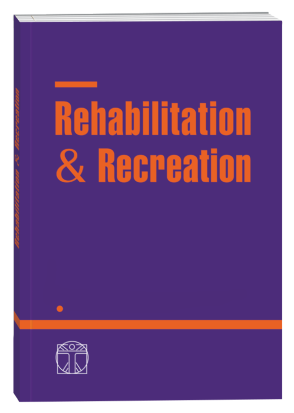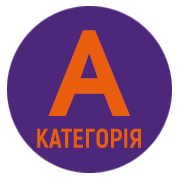ОЦІНКА ПРОГРАМИ РОЗВИТКУ ХУДОЖНЬОЇ ГІМНАСТИКИ
Ключові слова:
оцінювання, коучинг, спорт, художня гімнастикаАнотація
Це дослідження має на меті: 1) Знати яка роль тренера у навчанні та розвитку художньої гімнастики в Чилакап Регентство. 2) Знати роль програми тренувань та розвитку досягнень у художній гімнастиці в Чилакап Регентство. 3) Знати, як керувати управлінням та розвитком досягнень художньої гімнастики в Чилакап Регентство. 4) Знати, як оцінити впровадження коучингу та розвитку досягнень художньої гімнастики в Чилакап Регентство. 5) Знання зручностей та інфраструктури для розвитку та досягнень художньої гімнастики в Чилакап Регентство. 6) Знання того, що перешкоджає досягненням художньої гімнастики в Чилакап Регентство. Це дослідження є оціночним вивченням з контекстом, вхідними даними, процесом, продуктом (КВПП) моделі. Методика вибірки, використана у цьому дослідженні, була цільовою технікою вибірки. Методами збору даних у цьому оціночному дослідженні є спостереження та опитування (анкети). Метод, використаний у цьому дослідженні, – це опитувальний метод за шкалою Лікерта. Метод аналізу даних, використаний у цьому дослідженні, – це описовий аналіз, а саме шляхом опису та інтерпретації даних кожного з компонентів, що оцінюються. Результати показали, що тренер зміг добре виконувати тренерську роботу, він зміг дисциплінувати спортсменів, а адміністратори також змогли добре керувати організацією. Потрібна регенерація спортсменів та розуміння спортивних функціонерів для розвитку потенційних спортсменів. Спортивне тренування організовується планово, комплексно та стійко. Підтримка інфраструктури та об'єктів якості та кількості. Визначеними перешкодами були фактори спортсмена, фактори тренера, фактори оснащення та обладнання, фактори якості та фактори конкуренції. Організаційні фактори, а саме фінансування, організаційне управління та координація. Висновок, отриманий з цього дослідження, полягає в тому, що програма тренування та розвитку досягнень художньої гімнастики в Чилакап Регентство гімнастичному клубі є добре організованою.
Посилання
Aprilia, K. N., Kristiyanto, A., & Doewes,M. (2018). The Exercise Evaluation of Badminton Athletes Physical Conditions and Sport Exercise Students in Central Java. Jurnal Pendidikan, 3(1), 441–446.
Aubry, A., Hausswirth, C., Louis, J.,Coutts, A. J., & Le Meur, Y. (2014). Functional overreaching: The key to peak performance during the taper? Medicine and Science in Sports and Exercise, 46(9), 1769–1777. https://doi.org/10.1249/MSS.0000000000000301
Avdeeva, M. S., & Tulyakova, O. V.(2018). Indicated factors of physical development, physical readiness, functional condition and efficiency of female students in the process of adaptation to training. Physical Education of Students, 22(1), 4–10. https://doi.org/10.15561/20755279.2018.0101
Eubank, M., Nesti, M., & Wood, M. L.(2017). A culturally informed approach to mental toughness development in high performance sport. International Journal of Sport Psychology, 48(3), 206–222. https://doi.org/10.7352/IJSP.2017.48.206
Hollings, S., Hopkins, W., & Hume, P.(2014). Age at peak performance of successful track & field athletes. International Journal of Sports Science and Coaching, 9(4), 651–661. https://doi.org/10.1260/1747-9541.9.4.651
Jackson, S. A., & Roberts, G. C. (2016).Positive Performance States of Athletes: Toward a Conceptual Understanding of Peak Performance. The Sport Psychologist, 6(2), 156–171. https://doi.org/10.1123/tsp.6.2.156
Longo, A. F., Siffredi, C. R., Cardey, M.L., Aquilino, G. D., & Lentini, N. A. (2016). Age of peak performance in Olympic sports: A comparative research among disciplines. Journal of Human Sport and Exercise, 11(1), 31–41.
https://doi.org/10.14198/jhse.2016.111.03
Marcora, S. [Ed], & Sarkar, M. [Ed].(2018). Sport and the brain: The science of preparing, enduring and winning, part C. Sport and the Brain: The Science of Preparing, Enduring and Winning, Part C., 9(1), 33–48.
Marrier, B., Robineau, J., Piscione, J.,Lacome, M., Peeters, A., Hausswirth, C., Morin, J. B., & Le Meur, Y. (2017). Supercompensation kinetics of physical qualities during a taper in team-sport athletes. International Journal of Sports Physiology and Performance, 12(9), 1163–1169. https://doi.org/10.1123/ijspp.2016-0607
Mkaouer, B., Hammoudi-Nassib, S.,Amara, S., & Chaabène, H. (2018). Evaluating the physical and basic gymnastics skills assessment for talent identification in men’s artistic gymnastics proposed by the International Gymnastics Federation. Biology of Sport, 35(4), 383–392. https://doi.org/10.5114/biolsport.2018.78059
Moeskops, S., Oliver, J. L., Read, P. J.,Cronin, J. B., Myer, G. D., & Lloyd, R. S. (2019). The physiological demands of youth artistic gymnastics: Applications to strength and conditioning. Strength and Conditioning Journal, 41(1), 1–13. https://doi.org/10.1519/SSC.0000000000000404
Norouzi,E., Hosseini, F. S., Vaezmosavi, M., Gerber, M., Pühse, U., & Brand, S. (2020). Zumba dancing and aerobic exercise can improve working memory, motor function, and depressive symptoms in female patients with Fibromyalgia. European Journal of Sport Science, 20(7), 981–991. https://doi.org/10.1080/17461391.2019.1683610
Pasichnyk, V., Khimenes, K., Pityn,M., Bas, O., Hlukhov, I., Hnatchuk, Y., & Drobot, K. (2021). Physical condition of preschool children with disabilities in psychological and physical development. Journal of Physical Education and Sport, 21(1), 352–359. https://doi.org/10.7752/jpes.2021.01033
Richardson, D. L., Duncan, M. J.,Jimenez, A., Juris, P. M., & Clarke, N. D. (2020). Affective responses to supervised 10-week programs of resistance exercise in older adults. Journal of Sport and Health Science, 9(6), 604–613. https://doi.org/10.1016/j.jshs.2019.01.006
Root, H., Marshall, A. N., Thatcher, A.,Snyder Valier, A. R., Valovich McLeod, T. C., & Curtis Bay, R. (2019). Sport specialization and fitness and functional task performance among youth competitive gymnasts. Journal of Athletic Training, 54(10), 1095–1104. https://doi.org/10.4085/1062-6050-397-18
Sealey, R. M., & Tope, S. B. (2011).Effects of exercise interventions on physical condition and health of Vietnam veterans. International Journal of Therapy and Rehabilitation, 18(8), 438–449. https://doi.org/10.12968/ijtr.2011.18.8.438
Stufflebeam, D. L., & Coryn, C. L. S.(2014). Daniel Stufflebeam’s CIPP model for evaluation: An improvement and accountability oriented approach. In Evaluation theory, models, and applications: Research methods for the social sciences (pp. 309–340).
Thomas, R. E., & Thomas, B. C.(2019). A systematic review of injuries in gymnastics. Physician and Sportsmedicine, 47(1), 96–121. https://doi.org/10.1080/00913847.2018.1527646
##submission.downloads##
Опубліковано
Як цитувати
Номер
Розділ
Ліцензія

Ця робота ліцензується відповідно до Creative Commons Attribution-NonCommercial-NoDerivatives 4.0 International License.












